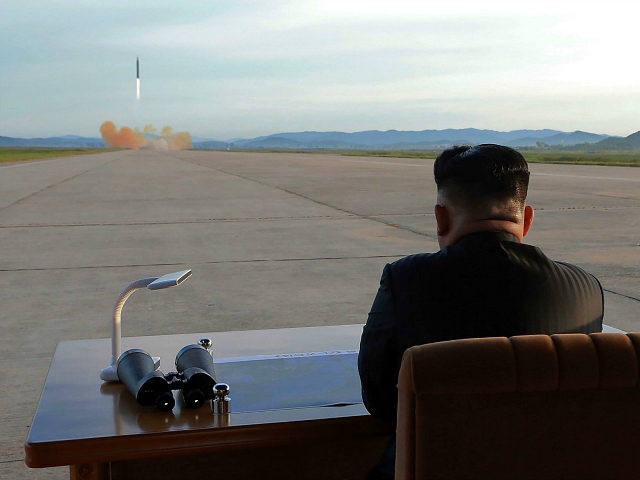Satellite photos of a new missile facility near the North Korean capital of Pyongyang provide further evidence the communist regime is continuing to expand its nuclear program, according to a report from the Washington-based think-tank The Center for Strategic and International Studies (CSIS).
Images obtained by the CSIS of the Sil-li Ballistic Missile Support Facility close to Pyongyang International Airport show that construction work is now near its completion.
“Taken as a whole, these characteristics suggest that this facility is likely designed to support ballistic missile operations,” the report stated. “As such, it is another component of the North Korean ballistic missile infrastructure that has been undergoing both modernization and expansion during the past 10 years.”
CSIS’s senior imagery analyst Joseph Bermudez, who authored the report, told Radio Free Asia’s (RFA) Korean service how North Korea continues to “develop and expand its ballistic missile infrastructure,” thus violating previous commitments to halt development on his country’s nuclear weapons program amid peace negotiations with the United States and South Korea.
“There has been no slow down at all that we can detect at present,” he explained. “It is part of North Korea’s expanding ballistic missile structure and it needs to be addressed at any future North Korean and US discussions.”
He continued:
What it does, however, is to bring this to the public light to discuss the issue in a more informed manner, it helps citizens of South Korea influence South Korean policy [toward North Korea], and it does the same thing here in the United States, [and in] Japan, Russia, and China.
To inform the public on the characteristics of North Korean ballistic missile threats is important, because the public influence the policy, and the policy ultimately influence the diplomatic development between the world and North Korea.
Trump has so far held two official summits with Kim Jong-un, the first taking place in Singapore in June 2018, followed by a second one in February in Vietnam last year. Trump and Kim signed a joint declaration during their first meeting, which did not require concrete action on either side.
The declaration did require the regime to work towards “denuclearization of the Korean peninsula.” The deals did not specify what that meant; North Korea often uses it to mean the removal of American military assets from the region.
A similar report published last November by The Heritage Foundation concluded that Pyongyang still “poses definite threats to the U.S. homeland,” as well as American military bases in South Korea, Japan, and Guam.
Since taking over North Korea following his father’s death in 2011, Kim Jong-un has overseen the aggressive development of the country’s nuclear weapons facilities and repeatedly threatened war against the United States and other western allies.
Last month, fresh doubts were cast over the future of the country and its nuclear weapons program amid reports that Kim’s health had been compromised, either by heart disease, an injury at a missile test, or the Chinese coronavirus. Although he is widely understood to be in poor health as a result of chain-smoking and his obesity, no evidence ever surfaced on the surgery or his current condition. Last week, he reportedly made his first appearance following a month-long absence from public life.
Follow Ben Kew on Facebook, Twitter at @ben_kew, or email him at bkew@breitbart.com.

COMMENTS
Please let us know if you're having issues with commenting.